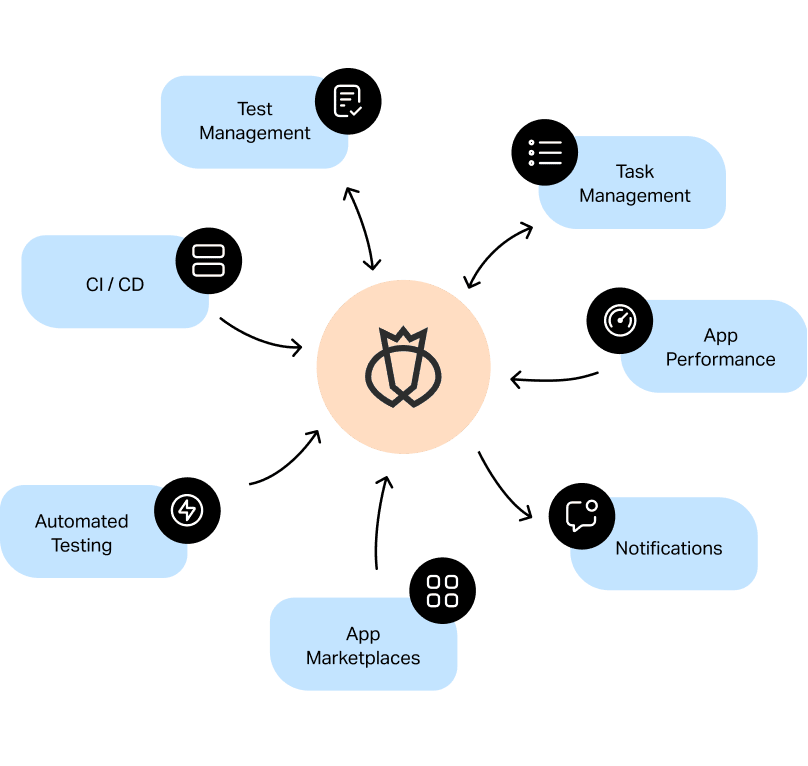Effective Automation Testing: Enhancing Software Integrity and Rate
Effective Automation Testing: Enhancing Software Integrity and Rate
Blog Article
Guaranteeing Success in Automation Testing: Trick Metrics, Obstacles, and Solutions Every QA Group Ought To Know
In the world of software program top quality guarantee, the landscape of automation screening is ever-evolving, requiring a thorough strategy to make certain smooth procedures. The trip to grasping automation screening is led with subtleties that require an eager eye for tracking, analysis, and continuous renovation. As the sector propels forward, the pursuit for ideal performance in automation testing continues to be a consistent search, advising QA teams to equip themselves with the expertise and approaches necessary for victory.
Importance of Key Metrics
Recognizing the importance of key metrics is essential for reviewing the performance and effectiveness of automation screening procedures. Key metrics offer as quantifiable measures that give beneficial understandings into numerous aspects of the screening process, such as examination insurance coverage, examination execution time, flaw density, and examination case performance. By evaluating these metrics, QA groups can identify traffic jams, inadequacies, and areas for renovation within their automation testing structure.
One crucial facet of essential metrics is their capacity to track development and check the overall wellness of the testing procedure (automation testing). They make it possible for stakeholders to make informed choices based on data-driven understandings, which can lead to a lot more reliable testing approaches and much better source allotment. In addition, key metrics can help teams established realistic goals, gauge the success of automation initiatives, and demonstrate the ROI of automation testing initiatives

Typical Challenges Encountered
Difficulties typically experienced in automation screening procedures can substantially influence the total effectiveness and effectiveness of QA teams. Automation screening might not cover all elements of screening, such as use and customer experience screening, which still call for hands-on intervention. Getting rid of these obstacles needs appropriate planning, calculated test situation choice, robust maintenance processes, adequate resources, and a clear understanding of the constraints of automation testing.
Effective Solutions for Challenges
To deal with the obstacles encountered in automation screening, applying effective services is essential for enhancing the efficiency and productivity of QA groups. One crucial remedy is to purchase durable training programs for QA teams to ensure they have the needed abilities to efficiently use automation tools. Training can connect expertise spaces, improve understanding of automation structures, and enhance scripting abilities, eventually resulting in more reliable test creation and implementation.
Another essential option is to establish clear interaction networks within the QA group and with various other stakeholders, such as developers and task managers. Efficient communication assists in aligning assumptions, sharing progress updates, and promptly resolving problems or obstacles that may emerge during the automation screening procedure.

Tracking and Analysis Strategies
Carrying out efficient surveillance and analysis methods is additional reading essential for ensuring the success and effectiveness of automation screening processes. In addition, evaluating examination results and metrics supplies valuable insights right into the quality of the software application being tested and the efficiency of the testing technique.
One trick technique in tracking and evaluation is the use of control panels that settle pertinent metrics and KPIs in a visually easily accessible layout. These dashboards use a thorough summary of examination implementation status, examination protection, problem fads, and various other vital info. Routinely evaluating and evaluating these dashboards can assist QA groups make notified choices, focus on jobs, and maximize screening efforts.
Additionally, carrying out automated informs and notices based on predefined thresholds can enhance proactive surveillance and prompt intervention. By establishing up informs for efficiency inconsistencies or examination failings, groups can attend to concerns promptly and prevent them from rising. Overall, monitoring and evaluation strategies play an essential duty in guaranteeing the efficiency and success of automation testing initiatives.
Constant Improvement Strategies
Enhancing the efficacy of automation screening procedures necessitates the constant improvement of methods and approaches. One vital technique to More Bonuses enhancing automation testing procedures is to carry out normal testimonials and retrospectives.

Conclusion
In final thought, it is vital for QA groups to comprehend the vital metrics, challenges, and services in automation testing to ensure success. By carefully keeping an eye on and assessing data, implementing reliable solutions to typical challenges, and continuously enhancing strategies, QA teams can enhance their screening procedures and deliver premium software program items. Sticking to these practices click will inevitably bring about a lot more effective and efficient automation screening methods.
By evaluating these metrics, QA groups can identify bottlenecks, inefficiencies, and areas for improvement within their automation testing structure.
Additionally, key metrics can aid teams set reasonable goals, gauge the success of automation initiatives, and demonstrate the ROI of automation screening efforts.
Obstacles typically encountered in automation screening procedures can substantially impact the overall performance and effectiveness of QA teams. Automation testing might not cover all facets of testing, such as functionality and customer experience testing, which still call for manual intervention.In final thought, it is vital for QA teams to understand the vital metrics, obstacles, and services in automation screening to guarantee success.
Report this page